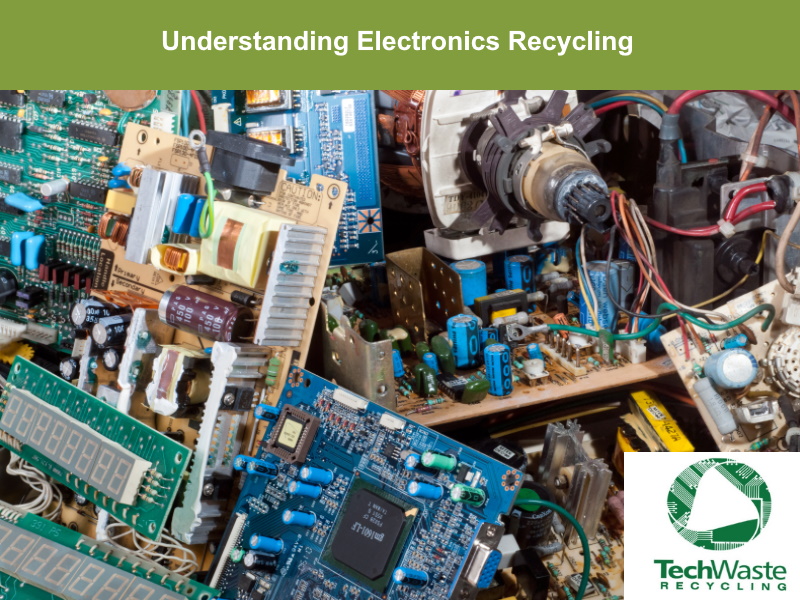Not everyone has a clear understanding of electronics recycling. This leads to a misunderstanding of how electronics recycling differs from other forms of recycling, as well as what happens to the rare earth elements found in electronics. Continue reading to learn every step of the electronics recycling procedure, beginning to end.

Electronics Recycling Explained
Electronics recycling is the act of collecting, sorting, and recycling electronics with the intention of reusing the electronics’ salvageable properties (through the recycling process). This procedure is also intended to protect the environment from potentially toxic substances that may end up in landfills and leach into the air, soil, and water. Additionally, electronics recycling serves to destroy confidential information contained within obsolete electronics. This safeguards businesses against data breaches, identity theft, and data leaks!
Different kinds of Recyclable Electronics
When you consider recyclable electronics, your smartphone, and laptop are likely the first items that come to mind. Yes, these electronics can be recycled!
There are many recyclable high-end electronics in the contemporary, technologically advanced world, such as computers/laptops, tablets, cell phones, televisions, radios, and other high-tech devices. However, there are numerous other types of electronic devices that can be recycled. These include monitors, circuit boards, printers, digital cameras, air conditioning and heating, VHS and DVD players, microwaves, batteries, calculators, telephone equipment, and more.
The next question is how to recycle electronics.
Collect Electronics
First, you need to collect electronics. You can find old electronics in places where technology is used. The places where you can find these are: homes, offices, hospitals, schools, manufacturing facilities, agencies (digital advertising agencies), TV studios, and Movie Film production offices.
Selling Your Used Hardware Makes Valuable Fiscal and Environmental Sense
You can even start an electronic recycling campaign in your community and at work. All you need to do is to create an electronics recycling plan and encourage your employees and neighbors to join. Once you have a solid plan in place, the collection of obsolete electronics in your community or throughout your office or facility will be significantly more organized.
Deliver the Recyclable Electronics to an R2-certified Company
The transportation of the electronics to a certified electronics recycler is arguably one of the most crucial steps in electronics recycling. Prior to the recycling process, you must ensure that your old electronics are sent to a specialized facility that is capable of wiping private data from your devices.
Additionally, you must ensure that the facility is eco-friendly and committed to proper electronic recycling protocols.
Then, many recycling facilities offer pick-up services, especially if you have a large number of heavy electronics to recycle. If not, you may drop off the electronics yourself.
Electronic recycling R2-certified companies, such as TechWaste Recycling, may also oversee your e-waste disposal. Call now to schedule a pickup. check the location areas we cover.

































